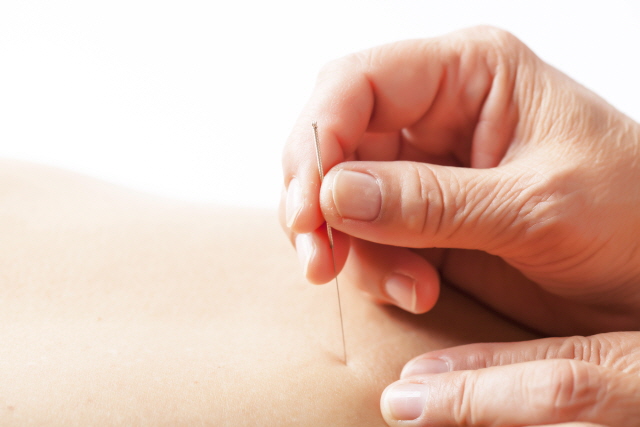
Introduction: How To Perform Abdominal Diagnosis
The Easiest And The Most Efficient Diagnosis For Saam Acupuncture
Namwook Cho L.Ac.
When using Saam Acupuncture, it can be said that the accuracy of diagnosis determines the outcome of treatment. The pulse diagnosis is not easy to learn and does not accurately find the problem with the diagnosis technique alone. Tongue diagnosis is easier than pulse diagnosis, but it is still insufficient as a method for making an accurate diagnosis.
At this time, the easiest diagnostic technique to use is abdominal diagnosis to determine which meridian needs to be treated and check if the pain is relieved after applying Saam Acupuncture. The accuracy of diagnosis can be significantly improved by combining pulse and tongue diagnosis.
Abdominal diagnosis takes advantage of the fact that when there are various pains or internal diseases, as the Back-shu points or Abdominal Mu points of the relevant intestine are pressed, a significant degree of tenderness appears compared to other places. In general, when diagnosing a patient, the default position is lying down position, so the Back-shu points could easily used.
If you are not yet familiar with Saam Acupuncture, regardless of the patient’s chief complaints, get into the habit of first checking the Back-shu points of the five viscera to determine which meridian is not working normally. Finding the root cause of the patient’s current symptoms and how it affects the related organs is achieved easily with an abdominal diagnosis.
There are several abdominal diagnoses, but I would like to inform you that the abdominal diagnosis I mention is the method of the Chongtong Acupuncture theory, which I mainly use in my practice.
The Chongtong acupuncture technique is an acupuncture theory that makes easier understanding and applying Saam acupuncture which does not have a detailed explanation of the diagnosis method. Lee Chi-woong, a Korean Asian medicine doctor, proposed diagnostic methods for each organ and treatment according to symptoms based on the acupuncture point configuration of the existing Saam acupuncture method.
What I have always felt while using abdominal diagnosis is that, in addition to the advantages described above, communication with patients has become smoother, and analysis of why certain treatments were successful and others not.
The following are the acupuncture points for the diagnosis of organs. The method of performing abdominal diagnosis is to always apply the same pressure to the relevant acupuncture point with the fingertips. Ask the patient to rate the amount of pain he or she subjectively feels with pressure on a scale from 0 to 10. Also, as you treat a symptom, check and compare the tenderness of the points that are more painful than others after applying a certain Saam acupuncture formula. It is considered to be properly treated if the pain is reduced by more than 70-80% in most cases. If you become experienced, the pain should decrease by more than 90%.
Acupints That Show Each of Five Viscera Conditions
- Liver: ST28. Exceptionally, liver problems do not often appear in the LR14, which is the Mu point of the liver. Use St28 instead of LR14 to diagnose liver problems or to confirm the existence of a pathogen in the liver.
- Heart/Heartpo: CV14/CV17 Keep in mind that CV14 reacts to the pathological conditions of the heart and spleen simultaneously. In addition, CV17 is also responding and reflects the pathology of the pericardia and triple buner meridians.
- Spleen: CV14. I explained that CV14 represents the pathological condition of the heart and spleen. The way to differentiate between heart problems and spleen problems is that if there is tenderness in the upper abdomen and also tenderness in the LR13, it means that there is a spleen problem. If the pain is only in the lower abdomen, it is diagnosed as a heart problem.
- Lung: LU1 is a good indicator of lung pathology. However, in the case of heat stagnation, water retention, and phlegm, the reaction to this is well expressed here, but in the case of Qi deficiency, there may not be much tenderness even though there is a problem in the lungs. At this time, see if there is a sign of Qi deficiency, such as pale facial color, weak voice, or dislike of cold.
- Kidney: Kidney pathology appears in GB25, K16, and BL23. Suppose the symptom becomes severe as tenderness is found closer to the GB25. As a simple way to check, I usually check K16 in most cases.
































